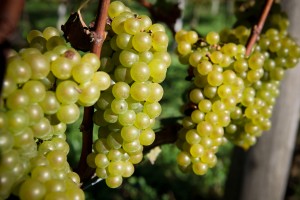Historical 2013 harvest for Brazilian white wines and sparkling wines
Grape production in the state of Rio Grande do Sul reached 610 thousand tons, representing a decrease of 12% compared to the previous year
In a country the size of Brazil, it is rather difficult to trace a single profile for the harvest in all the wine and grape regions. Even so, it is possible to say that Brazilian wines produced in the 2013 vintage will be an invitation to taste aromatic whites, lighter young reds and mainly, excellent quality sparkling wines.
Amongst the features common to the main producing regions – with the exception of Vale do São Francisco, which has its own harvest schedule – is the early harvest, from 10 to 20 days. Such phenomenon was caused by a mild winter during the dormancy period and untypically hot spring, right during the blossoming and shooting periods. This climatic condition favored grapes used for white wines and sparkling wine production.
“Another common characteristic was the total rainfall for November, which was lower than normal. In addition to this, the accumulated insolation for the months of November, December and January were above normal in Serra Gaúcha, Campos de Cima da Serra and Planato Catarinense. Such conditions favor maturation and grape quality, reducing the recurrence of phytosanitary problems”, affirms Eduardo Monteiro, researcher of agrometereology at Embrapa Grape and Wine.
In terms of volume, the 2013 vintage should be slightly smaller than the previous year. A drop in productivity was registered in American varieties, such as Isabella. This year’s harvest in Rio Grande do Sul should reach 610 million kilograms, representing a reduction of 12% compared to the 2012 harvest. Information regarding the harvest’s performance has been compiled by the Brazilian Wine Institute (Ibravin) and will feature in the harvest and market report to be published next month.
“At the beginning of the harvest we had exceptional conditions, not seen for very long. White and precocious varieties, like Pinot Noir, largely used in sparkling wines, reached levels of excellence”, celebrates the president of the Deliberative Council of Ibravin, Alceu Dalle Molle, referring to the conditions observed in the state of Rio Grande do Sul. Mr. Dalle Molle adds that the variety Ives, the base grape for 100% natural juices, was also favored due to being harvested in a period with no rainfall.
FIND OUT ABOUT THE HARVESTS IN THE MAIN BRAZILIAN PRODUCING REGIONS:
SERRA GAÚCHA
In Serra Gaúcha, sparkling wines produced in the last harvest reached historical quality levels, presenting high freshness, extremely fine aromas, great acidity and even aging potential. The varieties Chardonnay, Pinot Noir and Riesling Italico were benefited for having been harvested in a period with little rainfall. Short cycle reds also had a positive impact, such as Merlot, Tannat, Pinotage, Barbera and Marselan. Rainfall at the end of the harvest, though, did not favor the late varieties as much.
CAMPOS DE CIMA DA SERRA
A ten to fifteen day early harvest should result in the production of very aromatic white wines and medium structured reds. Climatic conditions benefited production of sparkling wines, which present high aging potential due to primary aromas’ neutrality and freshness.
SERRA DO SUDESTE
Climatic irregularity that took place in August 2012, during the dormancy period, resulted in harvest drop of up to 25% for some varieties. Quality, though, was not affected. During phenolic maturation grapes had great thermal amplitude and precipitation distribution conditions. Even red varieties obtained good performance. Merlot, Nebbiolo, Teroldego and Tannat can be highlighted as well as Chardonnay.
CAMPANHA
Campanha region marks 2013 as a year favorable for sparkling wines. Climate with unusual precipitation between December and February, demanded great vineyard maintenance. Medium cycle varieties like Merlot, Tannat and Teroldego, were affected by rainfall, which caused inequality in maturation and delayed harvest point. Aggressive thinning became necessary, implying in the loss of up to 70% in volume in some vineyards. This benefited companies with a good harvest, and better expectations for 2014.
PLANALTO CATARINENSE
Precocious varieties were the best favored with the short winter and unexpectedly hot spring. Frost harmed vines at the end of winter. During blossoming, though, conditions improved, favoring specially grapes used to make sparkling wines. Also, due to frosts, red grapes had a decrease in production, resulting in a 30% smaller harvest. The heat that followed anticipated the harvest, which registered rainfall in February and March.
VALE DO SÃO FRANCISCO
In Vale do São Francisco it is not possible to establish a single profile for 2013 harvest, as vineyards are divided into plots, they produce several harvests alternately, and each vine produces grapes at least twice a year. The first semester, an especially dry period and with good thermal amplitude, produced very fruity wines and with good balance between acidity and sugar. Lack of rainfall also represented lower harvest loss, enabling a rigorous control through irrigation.






